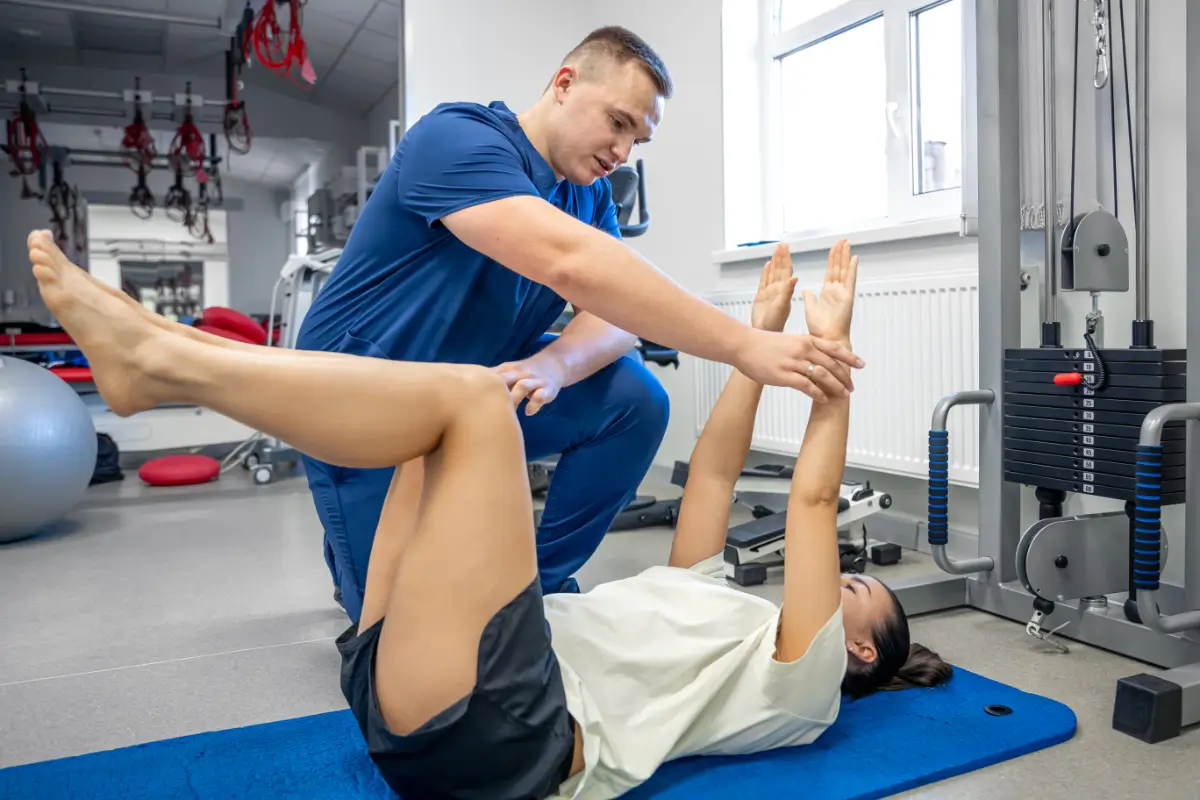Physiotherapy plays a vital role in managing and treating acute back pain. Physiotherapist’s can offer a range of effective interventions to alleviate discomfort and promote recovery. Let’s explore some ways we can help with acute and chronic back pain, covering assessment, treatment techniques, and prevention strategies.
Assessment and Diagnosis
We are trained to assess and rule out pathologies that need immediate medical attention after this, we assess movement patterns, range of motion, and potential contributing factors to back pain. We begin by taking a detailed history of the pain’s onset, duration, and any aggravating or relieving factors. This information helps identify potential causes and guides treatment decisions.
Physical examination includes:
- Observing posture and gait
- Assessing spinal mobility and flexibility
- Testing muscle strength and endurance
- Evaluating neurological function where necessary
- Palpating soft tissues and joints
By combining your history with our findings, we can determine the likely source of pain and develop an appropriate treatment plan.

Treatment Techniques
Pain Management
Physiotherapists employ various modalities to manage pain and promote healing:
- Dry needling
- Joint mobilization and manipulation
- Soft tissue massage
- Trigger point therapy
- Myofascial release
These hands-on approaches aim to improve joint mobility, reduce muscle tension, and alleviate pain. Manual therapy can be particularly effective in restoring range of movement and reducing protective muscle spasms that often accompany acute back pain.
While the evidence for some of these modalities is mixed, they can provide short-term pain relief and facilitate participation in more active treatments.
Exercise Therapy
Contrary to the outdated advice of bed rest, current evidence supports early, gradual return to activity for acute back pain. We can prescribe tailored exercise programs to:
- Improve flexibility and range of motion
- Strengthen core and back muscles
- Enhance overall fitness and endurance
Exercises may start with a few short walks a day and progress to more challenging strengthening exercises as pain subsides. The goal is to restore function and prevent recurrence by addressing any underlying weaknesses or imbalances.
Education and Advice
Patient education is a crucial component of physiotherapy for acute back pain. We provide:
- Explanation of pain mechanisms
- Advice on posture and ergonomics
- Guidance on activity modification
- Strategies for self-management
Understanding the nature of your condition empowers you to take an active role in your recovery and helps alleviate anxiety that can exacerbate pain.

Movement Retraining
Acute back pain often leads to altered movement patterns as the body tries to avoid pain. We work to retrain proper movement mechanics, focusing on:
- Modifying lifting techniques
- Altering sitting and standing postures
- Efficient walking and running gait
By addressing these fundamental movements, physiotherapists help prevent the development of compensatory patterns that can lead to chronic issues.
Progression and Return to Activity
As acute back pain improves, we can guide you through a gradual return to normal activities. This process involves:
- Progressively increasing exercise intensity and complexity
- Simulating work or sport-specific movements
- Providing guidelines for safe return to work or sports
The goal is to restore full function while minimizing the risk of re-injury.
Prevention Strategies
Preventing recurrence is a key focus of physiotherapy for acute back pain. Strategies include:
- Ongoing exercise programs to maintain strength and flexibility
- Ergonomic assessments and modifications at work and home
- Stress management techniques
- Education on proper body mechanics for daily activities
By addressing these factors, physiotherapists aim to reduce the likelihood of future episodes of back pain.
It’s important to note that physiotherapy for acute back pain is not a one-size-fits-all approach. Treatment plans are tailored to each patient’s specific needs, considering:
- The nature and severity of the pain
- The patient’s overall health and fitness level
- Work and lifestyle demand
- Personal goals and preferences
This individualized approach ensures that treatment is both effective and sustainable.
Evidence-Based Practice
Physiotherapy for acute back pain is grounded in evidence-based practice. Research supports the effectiveness of active interventions, such as exercise and manual therapy, over passive treatments alone.
In some cases, acute back pain may require a multidisciplinary approach. When needed we can collaborate with:
- GP’s
- Pain specialists
- Occupational therapists
- Psychologists
- Orthopaedic Specialists
This team approach ensures comprehensive care, especially when other life stressors may be contributing to your pain.
Physiotherapy offers a comprehensive approach to managing acute back pain, combining hands-on treatment, exercise therapy, education, and prevention strategies. By addressing not only the symptoms but also the underlying causes of back pain, physiotherapists help patients achieve relief and long-term recovery. The focus on active interventions and self-management empowers you to take control of your health and reduce the risk developing long-term limitations.
As our understanding of pain science evolves, so too does the practice of physiotherapy. Physiotherapy remains a cornerstone in the effective management of acute back pain, helping individuals return to their normal activities and improve their overall quality of life.

